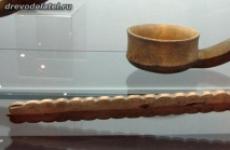The main styles of landscape design and description. Styles of landscape design: compare and evaluate the main characteristic features. Colonial style - photo and description
The dream of every owner of a private house is a beautiful and even unique piece of land. This can be achieved only with the proper design of its landscape. But here a reasonable question arises: what style of landscape design to choose? There are so many of them that it is easy to get confused in the characteristic features of each and, as a result, seriously make a mistake with the decor. That is why we recommend that you first read the descriptions of the most popular styles and evaluate how they look in the photo, and only then proceed to the direct design of the site.
Symmetry and graceful splendor - it is these two main rules that the regular style obeys. In the center of the landscape composition there must be a large object: a fountain, a sculpture, a pond. Ideally smooth paths covered with pebbles or gravel, and symmetrical trees diverge from it. Paths on all sides should be surrounded by a neat single-level lawn.
 Classic regular style
Classic regular style As for trees, the regular style assumes the presence of only those species that keep their shape well: spruce, thuja, catalpa, linden.
Another feature of such landscape design is bosquets. These are geometric compositions of perfectly cut shrubs.
organic landscape style
This is the absolute opposite of the regular style, because here the main emphasis is on natural nature and an organic combination with the surrounding reality. Even the house itself is undesirable to visually highlight - it is better to disguise it with trees.
 landscape style
landscape style The main feature of this landscape design is meadow and forest flowers. They land in random order, since it is not so much their organization that is important, but their proximity to the natural landscape.
Advice. To maximize the landscape style on your site, use flowers in pastel colors, especially warm white-silver and yellow shades.
Paths should be winding, not straight. The most suitable surfaces are low grass, brick chips or sand.
Soothing Japanese-style landscaping
The Japanese-style landscape is a miniature copy of mountainous Japan, the central element of which should be a "rock garden". Stone paved paths, decorative compositions of 5-6 stones, stone fountains and sculptures - all this should be present on your site.
The colors of the Japanese style deserve special attention - there is no place for flashy tones, because each element of the landscape should set the soul and body to rest from the bustle of the world. Therefore, all flower plants should be calm shades. Tall trees are also undesirable here. Dwarf pines and juniper - this will be quite enough for a Japanese garden.
 Japanese style
Japanese style You can’t do without a small pond with a neat bridge and decorative lanterns on such a site - they will make the landscape more expressive and colorful.
Controversial English style
English landscape design is a cross between strict classical and chaotic landscape styles. Here you will not find straight lines, even shrubs and symmetrical flower beds, but you will definitely see a perfectly trimmed lawn, which, it would seem, absolutely does not fit into the overall concept. But this is the point of design: a neat lawn emphasizes the charm of a natural landscape.
Landscaping in the English style cannot be imagined without climbing ivy, grapes and hops - they should be twined not only with gazebos and a fence, but also with all the large buildings of the site, because these plants give them the effect of a light bewitching antiquity.
 English style
English style The optimal set of trees is larch, maple and spruce. But the shrubs should be in contrast, that is, more unusual: action, forsythia, hydrangeas.
Natural rustic style
The rustic landscape style is the opposite of all “civilized” styles, which is confirmed by its main features:
- instead of a lawn of the same height - sloppy grass;
- instead of ceremonial shrubs - unassuming plants;
- instead of a picket fence - wattle;
- instead of pots of a single sample - aged vessels of various sizes.
 Country style
Country style Traditionally, there should be a lot of fruit trees on the site, but not exotic, but simple ones: apple trees, cherries, pears. There can be no talk of any symmetry of the trees - only a chaotic landing is welcome. Flower beds are also as natural as possible: the usual daisies, cornflowers and tulips “live” here.
Authentic decorative details emphasize the rustic style: a scarecrow, a cart, a wheel - everything that creates an atmosphere of slight negligence on the site.
Soul country style
Modest, light and cheerful - this is how you can characterize landscape design in country style. It is ideal for those who want to get the most comfortable area without significant costs.
The central place in country landscape design is occupied by all kinds of rural decorative elements:
- old buckets;
- clay pots with flowers;
- watering cans;
 Country style
Country style - wheelbarrows;
- baskets.
The fence must be wooden and abundantly entwined with plants. But even better if it is a regular wattle fence.
A neat lawn on such a plot is useless - it will be successfully replaced by lawns with plants that do not require special care: daisies, clover, dandelions. Also, there must be berry bushes and fruit trees.
Noble Mediterranean style
The landscape in the Mediterranean style denies luxury and pretentiousness, but welcomes modest nobility, so the main feature of such a site is exquisite simplicity in every detail.
Bush hedges, a large number of flowering flower beds with roses, lawns with herbs, fruit trees - this is the minimum set of vegetation for such a garden.
 mediterranean style
mediterranean style Also, a Mediterranean-style site is impossible without water elements: fountains, waterfalls, streams - one of these landscape components should become the center of the entire design composition.  Chinese style
Chinese style
Not far from the pond, you need to equip a stone composition - it can be either a traditional miniature on a tray or a decorative slide.
As for trees, willows, plums, peaches will be the most appropriate. The scheme of their landing does not matter, but it is important that there are not too many trees and they do not cover the gazebo or pond. And, of course, an essential attribute of any Chinese garden is a richly decorated gazebo with a curved roof.
As you can see, each style of landscape design is unique. So first think carefully about which of the above formats of the site is closer to you, and only then feel free to proceed to its design.
Styles in landscape design: video
One of the main charms of living in a country house is the ability to improve the surrounding area at your own discretion. Even in a small area, you can create a paradise with lush greenery, fragrant flowers, the sonorous murmur of a stream and a secluded place for family recreation. The main thing is to determine by what principle all these elements will be placed.
There are three main types of landscape design that determine the formation of relief in the allotted area: landscape, regular and Japanese. All three types have bright distinctive characteristics and put forward special design requirements. Let's take a closer look at each of them.

Features of plots in landscape style
The maximum proximity to the natural terrain, the lack of symmetry and the abundance of all kinds of components - this is what landscape landscape design looks like. Looking at such a site, it seems that a person did not put his hand to its arrangement at all. Of course, this is not true at all. Despite the extreme naturalness, the modern landscape project is carefully designed, and each element is in its place, creating an overall harmony.


The landscape project is dominated by asymmetry and a riot of colors. Flower beds and flower beds have sinuous shapes, trees and shrubs grow freely in the garden and have natural outlines (without curly haircut), paths and driveways are winding. Walking alleys resemble wild paths in the forest, and in the recreation area there are cozy wooden gazebos and benches. In such an environment, a person, like nowhere else, feels unity with nature.


Distinctive features of a landscape project in a regular style
Unlike the landscape style, the regular style accepts symmetry, the severity of forms and lines. In such a project, the combination of all elements creates a harmonious composition, and the site itself becomes the embodiment of an ideal order and a legislator of modern classical fashion. This style looks most organic in park areas and large home gardens.


Any component in a regular garden has an exceptionally strict, clear geometric shape. The road and path network is characterized by a complex structure with many intersections and sharp turns. A regular project cannot do without a perfectly even parterre lawn, flower beds with breathtaking flower arrangements, long walking alleys, stone sculptures, as well as rotundas and arches.


Philosophical basis of Japanese gardens
The Japanese style is not at all like other types of landscape design, since it is not based on the science of land improvement, but on Eastern philosophy. It is not surprising that three main elements take part in the creation of an oriental garden: stone as spiritual stamina, water as the transience of life, and wood as endless improvement. All these elements are in harmony with each other, which creates ideal conditions for contemplation, meditation and complete unity with nature.


At the heart of an Oriental-style garden project is sute-ishi, the art of placing stones in a backyard. To create a beautiful, and most importantly - philosophical, composition, you must carefully select the shape, size and color of the stones. An irreplaceable accompanist of stones are reservoirs - streams, waterfalls and ponds. Fanciful fountains are out of place here. Naturally, where there are water bodies, there is vegetation. But the oriental style does not welcome the variety of ornamental plants.


Japanese-style gardens come in three types: flat, hilly, and rugged. Plain gardens do not have hills or depressions, and their relief is absolutely flat; at the head of a hilly project lies a hill, supplemented by a water stream (waterfall or stream); in intersected gardens, a key role is given to a pond or a lake with an island on which stone compositions are erected.


The Japanese-style garden project cannot be confused with other landscape design, thanks to the following features:
The abundance of stone and water compositions;
Combining dynamic and static elements;
Lack of clear symmetry in zoning and compositional structure;
Minimalistic relief decor.


Landscape design is an activity to create a beautiful and comfortable environment in various areas, usually outside the home - in a garden, in a park, in a recreation area, etc. The purpose of this activity is to create aesthetics and harmony of natural and man-made forms. Landscaping provides truly limitless opportunities for creativity and allows you to fabulously transform even a modest personal plot. In this short article, get acquainted with the main components of landscape design and terminology.
Landscaping styles
The main types of landscape design:

Within each design direction, different styles have developed that differ in the forms and elements used, materials and preferred plants. Currently, there are many style directions in modern landscape design, for example:
and others.
Within each style, certain rules for the selection of individual design elements and their combination are expected to be observed. A detailed description of each of the listed styles can be found on our website at the appropriate links above.
The main components of landscape design

The choice of elements depends on the size of the site, the aesthetic preferences of the designer and the style direction.
Large forms: trees and shrubs
To create relatively large elements, shrubs and trees (both ordinary and dwarf) are used, which can be composed of:
- alleys - even rows of plants along the path;
- hedges - rows of closely planted shrubs;
- plantings of bouquet and nesting type - a group of several plants planted in a circle;
- borders - framing individual sections with the help of undersized densely planted shrubs;
- tapeworms - separately planted shrubs or trees of especially valuable species;
- backstage - a continuous row of trees or shrubs that limit the view of the distant perspective;
- labyrinths - high hedges, forming a system of intricate paths;
- topiary - small-leaved shrubs and trees, the crown of which has a bizarre shape due to curly haircut.
All of these elements are most characteristic of a regular look design.
Space for imagination: flowers and cereals
— an integral element of the garden, it serves as a wonderful green or colored background for other objects.

Flowers are the brightest element of landscape design. There are certain ways to organize flowers in flower beds and flower beds, allowing you to most fully reveal their beauty.
- - planting flowers, forming a certain geometric shape along the contour and area;
- arabesque - a flower bed of an unusual, intricate shape;
- - bordering strip of flowers;
- monogarden - a plot on which one specific type of flower is grown (rosary, gladularia, syringaria, dahlia);
- border - a narrow row of flowers of the same species along the edge of a hedge;
- - a border made up of flowers, different in appearance, color and height.

Romantic fleur: ampelous plants
Plants grown in hanging bowls and planters are called ampelous. As a rule, they have stems hanging down, or vice versa, rising up along the supports. Their use is a spectacular method of vertical gardening. With their help create and decorate:
- pergolas (canopies) and arches - to decorate the entrance to the garden;
- trellis and trellises - as green walls and partitions that allow zoning the space;
- gazebos, sheds, verandas - climbing plants on their walls create a romantic image.

Small architectural forms
Small architectural forms (abbreviated MAF) include.
For a modern gardener, it is important to have not only a fertile, but also a stylish beautiful garden and vegetable garden. There are about 15 basic styles of landscape design of the site. Some of them are ideal for central Russia, others require a lot of effort for implementation and further care.
Fundamentals of any landscape design
The main condition for the harmonious design of the garden plot is to match the style of the house with the rest of the plot. It is also necessary to take into account the existing landscape (alpine style on the plain rarely looks good) and the surrounding nature (Moorish style in birches is an extremely original solution).







The main styles of landscape design for the middle lane
Below are the main characteristics and photos of modern landscape design styles.

Country style
Rustic style is a style of cute neglect. The decor is characterized by a mixture of a garden, flower beds and a vegetable garden. The basis is fruit trees and shrubs, which are complemented by mallow, sunflowers, cosmea, calendula, chamomile and other unpretentious bright flowers. Sometimes, instead of flowers, the fruits of physalis, grapes, pumpkins are used.






Another characteristic is the use of many accessories: carts, wheels, old pots, wicker fences, decorative wells, barrels and benches.



It is important not to use strict forms and a clear division into zones, and also not to abuse spacious lawns.
English (landscape) style
To create an English-style design, you need to carefully study the existing vegetation on the site and beyond, since the basis of this style is maximum harmony with nature.

Another feature is the presence of winding stone paths, spacious lawns and small ponds decorated with stones, water lilies and irises. Mixborders are often planted that include a variety of flowers, ornamental grasses, and shrubs to mimic natural undergrowth.


You also need to remember about vertical gardening: ivy, wild grapes and, of course, climbing roses. In general, any variety of roses: semi-wild, weaving and separately growing is an integral part of the English style in landscape design.



Color accents - green, silver, purple. It is favorable to plant roses, delphinium, mallow, peonies, crocuses, sage, tulips, begonias, pansies and daffodils. Of the trees and shrubs, hydrangea, boxwood, mock orange, thuja, juniper, barberry and willow will ideally fit into the landscape. Flowers are planted in groups, mixed with flowers and herbs.



It is important to remember that the quality implementation of the landscape style in landscape design requires a spacious plot of at least 12 acres and constant care to maintain slight negligence. Benches, forged lanterns, humpbacked bridges, flowerpots, small arbors are used as complementary accessories.

Chinese style
This is an original style based on water, stones and trees. There are no restrictions on the size of the plot, but its implementation in life is quite laborious work. First, you need to select a lot of stones of various sizes and shapes. Of these, landscape groups are formed, which are complemented by plants.

Coniferous plants are most often used: pines, junipers, dwarf spruces, decorative maples and cherries. Fescue, ferns, irises, peonies are planted from flowers and herbs.






And of course the center of the composition is a pond with water lilies and lotuses. On the shore there is a gazebo, which is also considered an integral part of the Chinese style.

It is important to remember that a house for this landscape style must either be hidden behind the trees, or be made in high-tech or modern style.
Hi-tech style
This style is distinguished by clear chopped forms with right angles. Rigid separation of paths from lawns and flower beds. The main focus is a well-groomed spacious lawn.

A variety of flowers and plants is not welcome. The most common choice is plants suitable for shearing, such as boxwood, juniper, cotoneaster, barberry. They are usually formed into cubes or balls.






From ornamental plants, preference is given to hostas, succulents, ferns, or small discreet ground cover flowers.

The main decoration of a high-tech garden is lighting and designer lanterns, as well as various benches and decorative balls made of polished stone or wood.
The paths are made as straight as possible from concrete plates. An artificial reservoir can become part of such a garden, but only if it is framed in concrete banks. The color scheme includes many shades of green and gray, blue, chocolate and purple.

Among the main styles of landscape design, one can also note the Mediterranean, Moorish and Alpine. All these styles require special landscape art skills to create a harmonious composition with the house and the surrounding nature.






And also associated with the use of exotic plants that require special care. Therefore, the best solution for central Russia is to use elements of a landscape or rustic style.

Photos of landscape design styles



















It takes a lot of effort, investment, style searches, and time to create the garden of your dreams. The value of landscape design lies in the ability to competently and logically distribute and break up space, place floral and other plant accents on the site. This requires a special creative approach.
Consider in more detail the nuances of the design of the site in this article.


Peculiarities
It is human nature to surround yourself with beauty. Natural harmony and landscape beauty today can be created with your own hands. The main thing is to follow the chosen direction. And the choice here is really very large. The modern style design of a garden or a personal plot can tell a lot about the owner: his tastes, preferences, knowledge.
Today, in suburban villages, you can find both separate directions and a mixture of styles. Eclecticism has its own characteristic features here too - in one corner you can see alpine design, in the other - avant-garde. The use of different styles allows you to find a solution for a specific site using modern building, covering and other materials, such as geotextiles.

Stylistic decisions
In landscape design, all attention is paid to details: the shape of alleys and paths, the selection of plants, the color palette of the entire site, the presence of reservoirs and hills. The chosen styles may differ in popularity, but not in energy.
Any landscape is good if made with soul. For example, you can organize a chalet on flat terrain. But let's focus on the most common styles.


Landscape
This style is the most natural, classic. There is another popular name for it - English, so it is named for its commitment to classicism and traditions. A characteristic feature of this genre is the strict symmetry inherent in the landscape style. This applies to both site planning and trimmed shrubs. The naturalness of wildlife in this aspect is absent - everything is ruled by rationality, regularity in caring for the garden.
You can also find such a name for the landscape style as cottage. Wealthy people living in cottages outside the city need a calm, predictable atmosphere, at the same time not without some riot of vegetation. Certain types of plants are suitable for this, for example, bright, catchy spirea.


Signs of landscape style in garden landscape design:
- straight paths, paths and alleys;
- strict outlines of flower beds;
- classic view of trees and ponds;
- the presence of fountains (especially in the middle of the composition);
- the presence of gazebos at the intersection of paths.

landscape design is best for large plots (at least 15 acres). The color palette of the landscape can be any, the transition of shades should be soft.
To give more natural design in the design often used natural material (stone, wood).



In a landscape style, it is preferable to use topiary plants - linden, thuja, pyramidal poplar, maple are suitable for the main vegetation. A worthy decoration of the garden will be grapes, jasmine, lilac, juniper.


It is better to put a gazebo in a rounded shape with an imitation of an ancient Greek portico, or pergolas can be used. The garden will be decorated with cast or forged benches, ledges. To complete the composition, sculptural figures, columns, flowerpots on a leg and arches are suitable..
In the landscape style and in any of its varieties, there is romance and the desire for harmonious combinations, correct geometry (combinations of both strict and more loyal shapes and sizes), a lot depends on the general style of the design of the site.

Regular
Strictness and symmetry are also present in the regular style of landscape design. It's more French chic with popular axial compositions.
All attention is given to the key object in the landscape. The central figure is a sculpture, a tree, a fountain, a bush, and even a house. All objects are arranged symmetrically with respect to each other.. Although it is worth emphasizing that experiments are appropriate in a regular style. You can put a classic gazebo, and break a motley flower garden around. The reservoir can be natural or artificial, like a gazebo (for example, from shrubs).


The choice of plants for a regular garden is based on fundamentally important factors:
- strict symmetry and axial compositions;
- central or key figures;
- neat lawn and paths;
- symmetrical arrangement of flowers, shrubs and trees;
- flower beds planted in a certain order;
- the presence of gazebos from plants (bosquet) is welcome;
- the main flower garden in a regular garden usually consists of long-flowering plants (for example, marigolds or pergolas);
- bush plants are better to choose those that retain their shape for a long time after cutting (for example, barberry, maple, hawthorn, spirea);
- symmetrical crop plantings can be diluted with plant species from the natural environment.

Scandinavian
The refined and free Scandinavian style in landscape design attracts with a chaotic distribution of trees, flowers, bushes or sculptural figures on the site, an abundance of vegetation of different varieties and their bold combinations. At the same time, in the design of such a garden, a clear line of harmonious combination of all elements can be traced, up to garden furniture.
In many modern sites, the eye clings to beautiful wicker or wood furniture. It creates an indescribable feeling of home coziness and comfort.


Some designers advise to move away from stereotypes and give preference not to exquisite work benches, but to large hewn logs. Even a simple snag under a bush can bring more positive emotions than a chic sculpture.



In the Scandinavian style, the emphasis is on natural beauty and naturalness, natural shades in the design of the landscape. The presence of pebbles, cobblestones and branches “accidentally” found around the turn of the path is welcome.
Unusual shapes of objects are considered appropriate here.(benches, tables, awnings). A beautiful canvas of flowers can be adjacent to a high hedge. In general, greenery in such a garden should be in abundance.

In Scandinavian style, details play an important role. So, some rustic utensils can dilute the overall picture.


The main points that decide a lot in the Scandinavian style of site design:
- obligatory presence of stones (from ordinary and untreated blocks to small pebbles);
- artificial grottoes against the background of various plants create a natural phenomenon;
- the presence of decorative elements made of wood or stone;
- no asphalt paths, only grass or stone;
- free rectangular areas are also made of stone, and plants of bright colors and even berry bushes are planted around the perimeter;
- there should not be clear zoning in such a site.

Russian estate
Of great interest in landscape design is the design of the garden in the style of a Russian estate. The main difference of this design is that beauty and practicality are skillfully combined in it. In such a garden, both bright flower beds and neat vegetable beds look great.
Harmony is the main success factor in the design of a Russian estate. But it is worth considering that garden in domestic terms is inappropriate here. It is more like a decorative element of the landscape. In this style mini-gardens are practiced “for the soul and good”- this is one of the conditions for designing a garden in the Russian style.


The natural environment, even some negligence and randomness of the vegetation on the site are also one of the characteristic features of this style.

The garden requires regular care, but without fanaticism. It is more difficult to create a natural or natural landscape under the guidance of a gardener. In this case, you can do without cutting shrubs, but the lawn must be well-groomed. In the Russian garden, you can use both typical Russian latitudes and exotic plants.
Particular attention is paid to the topic of zoning on the site, when it needs to be divided into recreational and functional zones.



On the example of many sites, you can see the placement of accents from stones, architectural elements, hedges, arbors. If we take examples of how old Russian estates looked like, then we can recall vast areas with forests where birch, oak, and coniferous plants grew. Near the house, lilac bushes and fragrant flowers were sure to flaunt.
The breadth and generosity of the Russian soul is expressed not only in the song, but also in the space. Moreover, to feel free, it is not necessary to have large allotments. The main thing is the competent use of landscape space.


Japanese
This is a thematic garden that tunes in to East Asian philosophy. A feature of the Japanese-style garden is the maximum unity with nature. At the same time, here you will not find a chaotic planting of plants or "accidentally" scattered stones and sculptures. Japanese-style landscape design is possible even on a miniature plot, where several dwarf plants from the coniferous variety are usually located.
Thanks to the refined psychology of Japanese designers, a unique, inimitable landscape is created on the site, which does not accept the correct geometric outlines. The Japanese garden is characterized by the creation of several functional zones at once, regardless of the area..

Interzonal space has very smooth transitions due to the right choice of plants and materials. A garden in a classic Japanese style appears only in calm, delicate colors.


Chinese
Another type of Asian-style site is the Chinese garden. It is not always possible to equip a garden in this style the first time. Although the Chinese garden ideas seem simple, they are easy to implement.
The main subtleties of Chinese landscape design are that different styles can be easily combined here. For example, it is easy for the uninitiated to confuse Japanese and Chinese landscape design. In fact, there are a lot of differences. The Japanese style, like the Chinese, emphasizes the superiority and beauty of nature itself. but for the Chinese, it is important to emphasize the man-made nature of the garden.

The elements of water, fire and earth are the main components of the landscape.
When decorating the site, wood and metal are necessarily used. Design options in such a garden are extremely diverse. Therefore, before changing the general appearance of the site, it is worth deciding on the directions of Chinese-style design:
- the classic version of the design of the garden - with the presence of bright colors and smooth transitions, with many decorative elements;
- creation of a philosophical garden - a corner for solitude and reflection, without bright color spots;
- home garden - more like a small ornamental garden;
- calm or aggressive Chinese-style garden.




The whole landscape is arranged for tall or, conversely, low plants. But a full-fledged Chinese-style garden can only be set up on a large plot.
Country
The refined rustic country style attracts with the fact that it seems very familiar and familiar to many. This rural style in the design of the site has been known for a long time, subsequently, the designers managed to find other approaches to decorating the garden in an eco-style.
Free flight of fantasy against the backdrop of a natural riot of colors, lush flower beds, low hedges with a mysterious gate. Free eco-style in the design of the site implies naturalness and undemanding care.

Landscaping in country style can be arranged even in a summer cottage.


The main features of country style:
- the presence of trees of different sizes;
- rural simplicity;
- romance;
- bench near the house;
- a low white fence or wattle fence;
- fragrant berry bushes and small fruit trees;
- country gazebos;
- all kinds of paths and paths, bordered by flowers.

Three basic principles are used to create a country-style garden. Site design should be built on romance, softness, without inclusions of exotic colors. Preference is given to hydrangeas, phloxes, peonies, lilacs or jasmine. Chamomile, cornflowers, field herbs, yarrow and plantain are suitable as a decorative frame.
Romanticism is inherent in slight negligence - in such a garden you will not see perfectly smooth paths and an English lawn. It creates a feeling of the presence in the garden of a particle of the environment, without human intervention.



Artificial decorative materials are almost out of place here, even elegant plastic figurines will stand out noticeably against the general background of calmness and natural harmony. But the presence of clay pots, wooden watering cans, carts with vegetation and even old wheels is welcome.
Accessories that recreate the old rustic style fit into the country style. For example, a small mill, if a stream flows nearby, a gazebo from a rose garden, a wooden trough or bucket.


Humor in country style is clay figurines of gnomes or wooden sculptures of animals.
Modern
The modern stylistic design of the personal plot was embodied in a vivid example of modernity. There is also a mixture of minimalism and high-tech. This style reflects the individuality of the owners of the house, who prefer a bright urban style in design.
The Art Nouveau garden does not take up much space. Everything you need is already at hand - a lawn with clear lines, a couple of bushes, flowers and grass in the corner, free planning or zoning, possibly a pond or stream. The geometry of the garden here seems more symbolic, natural, unpretentious.

The presence in the garden of forging elements on a bench, a German-style lantern will perfectly complement the overall look of the site. The simplicity of the garden lies in the fact that it is clearly visible from any side.
The Art Nouveau landscape also implies contrasts. This applies to shapes, lines and colors, horizontal and vertical transitions, the play of light and shadow. When organizing a style garden, it is necessary to select plants, preferably exotic species. The more unusual or unusual the coloring of large leaves of garden plants, the better. Bushes can be cut in the most unusual shape and make them spherical, rectangular with transitions. Preference is given to bushy plants, which are easy to give the desired geometric shape.


The well-groomed garden in the Art Nouveau style contrasts with the lush vegetation of asymmetrical forms.
You can plant rhododendrons, giving them, on the one hand, a bizarre look, and on the other, leaving them in a slightly original form. Of plants unchanged companions in the Art Nouveau style have long been girlish grapes, clematis, bindweed, hops.
Original patterns on the green carpet are created by a contrasting combination of flower plants. Bionics, vintage and architectural forms in modern landscape design can combine the characteristic features of classic design elements, any theme is chosen.

Provence
The refined look and romance of a Provence-style garden goes back to the original source - French Provence. With lavender fields, winding paths, ornate stone wall decorations, this style fills the garden with indescribable charm.
Soft, energizing style Provence in landscape design embodies both Mediterranean and Italian design. The design of the garden in this style is typical for the most part for countries with arid hot climates.






